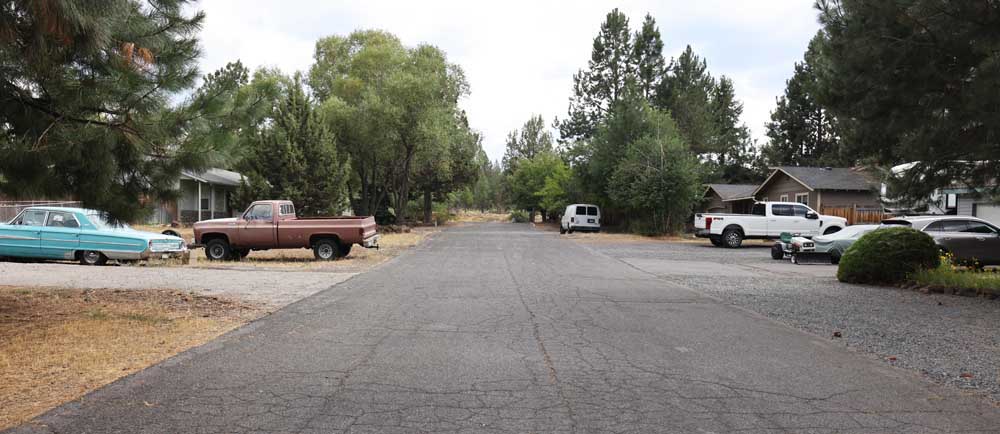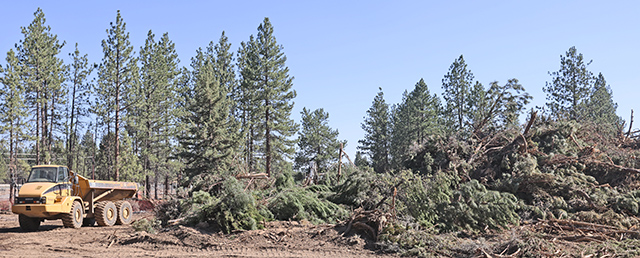Affordable housing goals tweaked for south Bend development
Published 5:30 am Wednesday, January 15, 2025

- Some of the residential housing located near the site of the proposed Ponderosa Estates, a 371 unit housing development, on the southern edge of Bend.
When the wooded 40-acre property just west of U.S. Highway 97 on Bend’s southern edge was scooped into the city’s urban growth boundary in 2016, property owners believed development could deliver at least 125 homes restricted for people earning less than 30% of the area median income — roughly the income of a family of four working full-time on minimum wage.
More than eight years later, the goal proved to be far from feasible.
Trending
Even with hefty financing from the state, an experienced affordable housing developer told the Bend Planning Commission during a Monday meeting that the plan requiring 125 units for Bend’s lowest income earners was economically impossible and would kill a project promising to deliver 371 homes, although the project could still deliver lots of affordable housing.
“What we’re being told is that you can’t afford to build affordable housing in Bend,” said Planning Commissioner Suzanne Johannsen. “And so, I don’t know what the answer is.”
Along with recommending approval of the master plan for the Ponderosa neighborhood slated for the former site of the Sunriver Preparatory School, the planning commission agreed to recommend a tweak a policy written into the Bend Comprehensive Plan in 2016 requiring the site include at least 125 units for the area’s lowest income earners.
The master plan now awaits final approval from the city council.
371 homes, including 125 affordable, planned for south Bend highway corridor
Trending
According to Bend’s Long Range Planner Brian Rankin, some landowners volunteered affordable housing requirements on the condition their properties be included in the city’s 2016 urban growth boundary expansion, which set the table for growth and development. The Ponderosa property now slated for development — which is owned by hotelier Curt Baney of the Oxford chain — was one of several with housing policy requirements.
“Economically, an entire property with the rent set at 30% (area median income) is just not viable right now, unfortunately,” said Ben Pray, CEO of Home First, an affordable housing developer with 39 projects completed in 20 cities across Oregon. That portfolio shows units set at 30% area median income come with increased operating costs. “There’s just not enough income generated to support the debt and our really elevated expenses.”
The high number of deeply affordable units is the only promise from 2016 Ponderosa developers are unable to meet. The development’s master plan, which is still seeking city council approval, promises 194 affordable units, including 175 restricted to people earning less than 60% of the area median income, of about $62,000 for a household of four. 19 homes will be restricted to people making half of that.
Pray said Home First was awarded $34 million in state funding to help finance the project. With more than half of the units in the Ponderosa community restricted to lower incomes, the housing there will be more affordable than the city’s latest urban growth boundary expansion site in southeast Bend, where income-restricted units will compose about one-third of all housing, a benchmark set by state legislation. There, 22 out of about 700 units will be restricted to the lowest income earners.
In the next 20 years, Bend will need 4,826 units for people making less than 30% of area median income to meet housing needs, according to a recent statewide analysis. The city needs about the same number for the next highest income level, and 12,600 new homes for people making above-average incomes.
But those units are easier for developers to build because they don’t require federal, state and local subsidies, said Racheal Baker, affordable housing manager with the city of Bend. Housing for the lowest incomes often requires support and services, which raises operational costs, Baker said.
“That type of funding gets you very few affordable housing developments, and when you need it at every level of affordability, the developers are going to choose the easiest ones to operate, and that’s your 60% AMI.”
As Central Oregon grows, people struggle to set down roots
The site in south Bend is also not ideal for high levels of lowest-income housing because it’s too far from the city’s core services and transit, Baker said. She said the bulk of Bend’s housing for the lowest incomes will likely come from supportive housing projects like the Cleveland Commons, a 33-unit apartment complex that will house people leaving homelessness or who can no longer work.
Residents of nearby neighborhoods urged the planning commission to table or send back the Ponderosa master plan, citing concerns over increased traffic, emergency evacuation routes and transportation improvements. They also voiced concern about an inequitable distribution of affordable housing across the city, telling planning commissioners that the area of southwest Bend along U.S. Highway 97 was bearing an unfair burden due to recent development.






